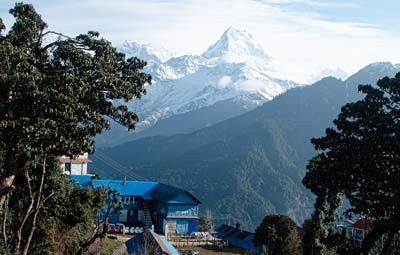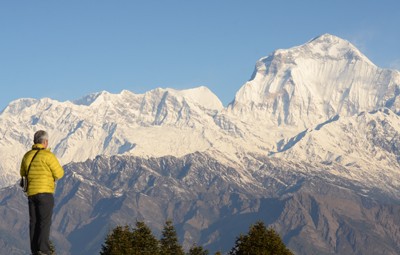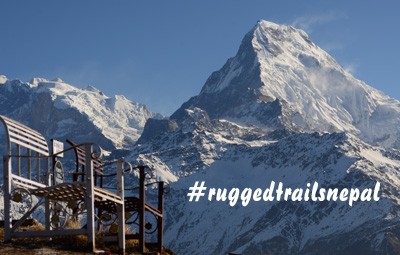Each day of Tihar is dedicated to a specific relationship, moving from the natural world to human connection:
First Day of Tihar: Kaag Tihar (Crows)
The festival begins by honoring crows, who are considered the messengers of Yama, the God of Death. Offering them food is an act of spiritual communication, seeking to ward off misfortune and respect the cycle of life. This simple ritual reminds us of our connection to the ecosystem.
Second Day of Tihar: Kukur Tihar (Dogs)
Day two is a celebration of dogs, recognizing their unwavering loyalty as companions, caretakers, and mythical guardians of the afterlife. Every dog, stray or pet, receives garlands, tika (a sacred mark), and special treats—a powerful display of compassion toward the animal kingdom.
Third Day of Tihar: Gai Tihar & Laxmi Puja (Cows & Prosperity)
The third day honors the cow (Gai), revered as an embodiment of the Goddess Laxmi, who symbolizes wealth and abundance. In the evening, homes are decorated with vibrant lights and rangoli patterns to welcome Laxmi and seek blessings for prosperity. This is also when women traditionally sing the Bhailo carols.
Fourth Day of Tihar: Goru Tihar & Govardhan Puja (Oxen & Nature)
Day four acknowledges the vital role of the ox (Goru) in agriculture. This appreciation for hard work often coincides with Govardhan Puja, where a replica mountain is made with cow dung, symbolizing protection and the power of nature.
Fifth Day of Tihar: Bhai Tika (Siblings' Love)
The final and most anticipated day is dedicated to the bond between siblings. Sisters perform a sacred ceremony, applying a multi-colored tika and garlands to their brothers, praying for their long life and prosperity. In return, brothers exchange gifts, solidifying a heartfelt connection that reinforces family unity.
Tihar is more than just lights; it's a profound cultural statement emphasizing harmony, interdependence, and social responsibility. While city celebrations sparkle with electric lights and bustling markets, rural areas connect the festival directly to the rice harvest, making the feeling of gratitude especially palpable.
✨ What is Mha Puja: The Ancient Festival of Self-Worship
Among the vibrant traditions of the Newar community in Nepal, there is one annual ritual that stands apart: Mha Puja (Deha Puja in Sanskrit). This isn't worship of a deity, but a profound ceremony dedicated entirely to the self.
The name itself comes from the Newari word 'Mha', which translates to "body". However, in the context of the ritual, 'Mha' represents the entire being—the body, the mind, and one’s speech. Mha Puja is fundamentally a practice of self-purification that acknowledges the deep connection between your physical, mental, and spiritual well-being. It serves as a symbolic annual reminder to practice self-care, self-respect, and awareness of the spiritual path you follow.
What is Deusi-Bhailo?
Deusi-Bhailo is a cornerstone of the Tihar festival in Nepal, celebrated by groups who travel from house to house, singing ancient songs and performing dances with traditional instruments like the Madal to offer blessings and good wishes. This deep-rooted tradition, which dates back centuries and includes regional variations, is a powerful expression of community spirit, fostering unity and strengthening social bonds as households reward the performers with money or treats in an exchange of gratitude. Ultimately, Deusi-Bhailo serves as an authentic vehicle for preserving Nepal's rich musical heritage and keeping local folklore alive, playing a vital role in reflecting the nation's core cultural values.
The vibrancy of the Tihar festival, also known as Deepawali, presents a striking contrast between large cities like Kathmandu and the rural regions of Nepal. In metropolitan areas, the celebration is characterized by the dazzling spectacle of electric lights, shops overflowing with festive goods, and constant public movement. Children and small groups move from door to door, singing traditional Deusi and Bhailo songs. However, the deep connection to agriculture, which defines the festival in the countryside, is often missed in the city. Conversely, the rural experience of Tihar is inextricably linked to the harvest season, marked by a crisp, clear sky and the urgent task of cutting and storing the rice paddy. Villagers prioritize cleaning every part of their property—from rooms and courtyards to livestock sheds—and there is a prevalent belief that donating freshly harvested rice to the Deusi and Bhailo groups ensures prosperity and prevents future shortage of food. The celebration is highly social, with groups of boys performing Deusi and women, including those separated by marriage, gathering to play Bhailo, strengthening community and familial bonds.
🌟 Conclusion: The Enduring Light of Tihar
Tihar is far more than just Nepal's "Festival of Lights"; it is a comprehensive celebration of interdependence and gratitude. Spanning five days, the festival systematically honors the natural world, from crows and dogs to cows and oxen, before culminating in the profound human bonds celebrated during Bhai Tika and the community spirit of Deusi-Bhailo. Whether witnessed amidst the electric sparkle of Kathmandu or experienced through the harvest rituals of a rural village, Tihar reinforces core values of harmony, self-respect (as seen in the unique Mha Puja), and social unity. It is an enduring cultural narrative that reminds us that true prosperity stems from respecting all life and cherishing the ties that bind us together.



